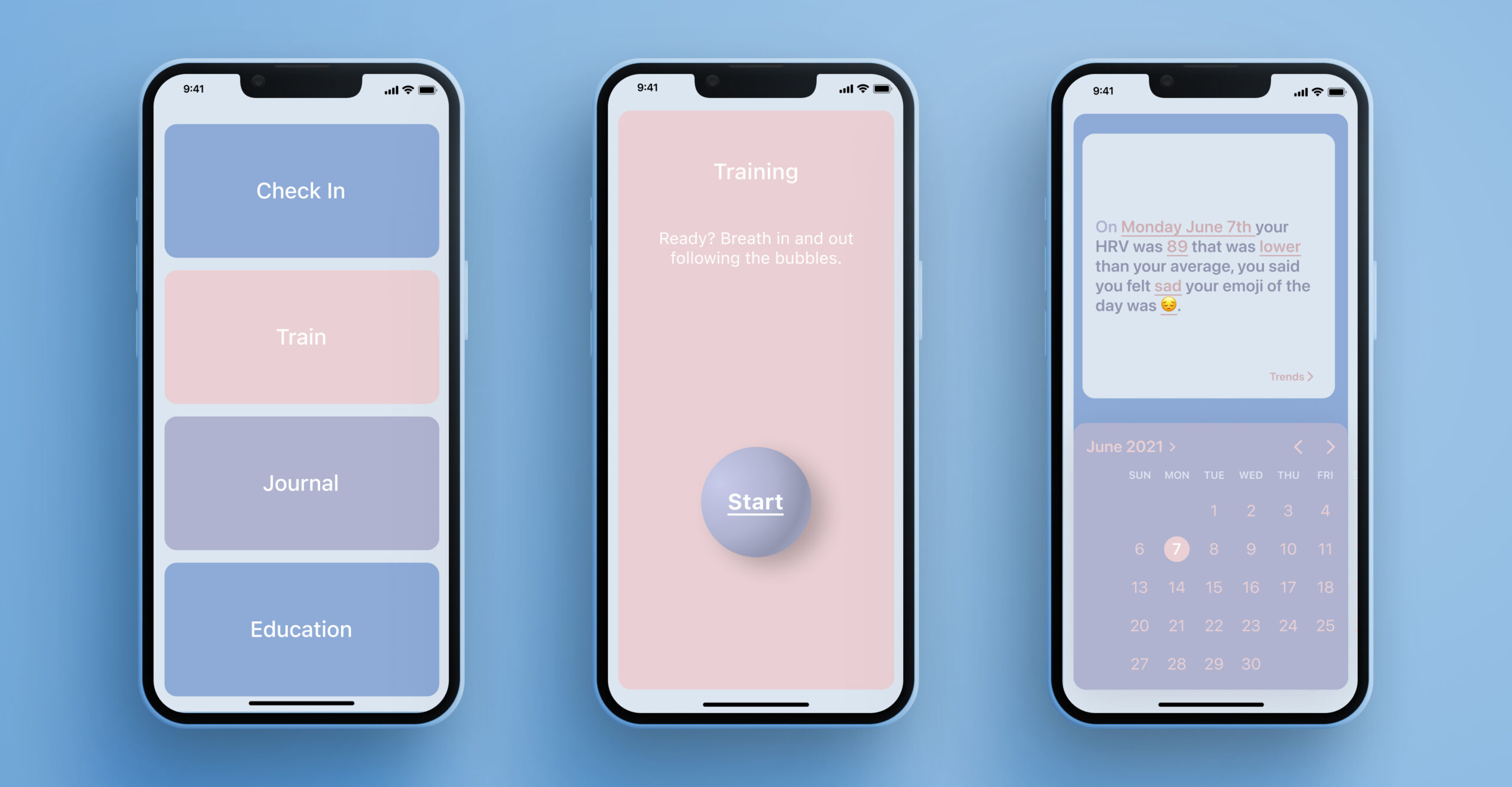
Healthy Heart Healthy Mind
Creating an app for mental and emotional wellness.
Mind and Heart Research Lab at California State Polytechnic University Pomona (CPP)
From: 8/19/2021 - 12/5/2021
Role: Lead Product Designer and Researcher
Team: Juan Cruz(me), Roderica Guo, Christy Liang, Itzel Sandoval, Alan Tan, Lauren Valdez
Background
The Mind and Heart Research Lab seeks to empower people to improve their well-being by providing training to reduce stress and improve emotional stability and resilience. The researchers from the Mind and Heart Lab at CPP came to us to design a Heart Rate Variability app that would be used to track and train HRV-related breathing techniques. The users were the students of Cal Poly Pomona and later the general population.
Our Goal
Create an HRV training app that focuses on the mental and emotional aspects rather than the sports aspect.
The deliverables would be high-fidelity wires, a non-working prototype for a mobile app, and a marketing and outreach plan.
The challenge was to have the deliverables done by the end of the semester, as they wanted to start on a working prototype the following semester. Because Covid was at its peak, work, and research would all be done from home and online.
First: What Is HRV?
HRV is a measure of the variation in time between each heartbeat. This variation is controlled by the nervous system called the autonomic nervous system. In general, a higher variability is good and healthy, it would suggest that you react appropriately to stressors and can relax from them. Besides health issues, a low variability could be a sign of depression, whereas a constantly high one could be a sign of anxiety. With practice, certain training techniques, and meditation be able to adjust your HRV at will, essentially lowering your stress levels.
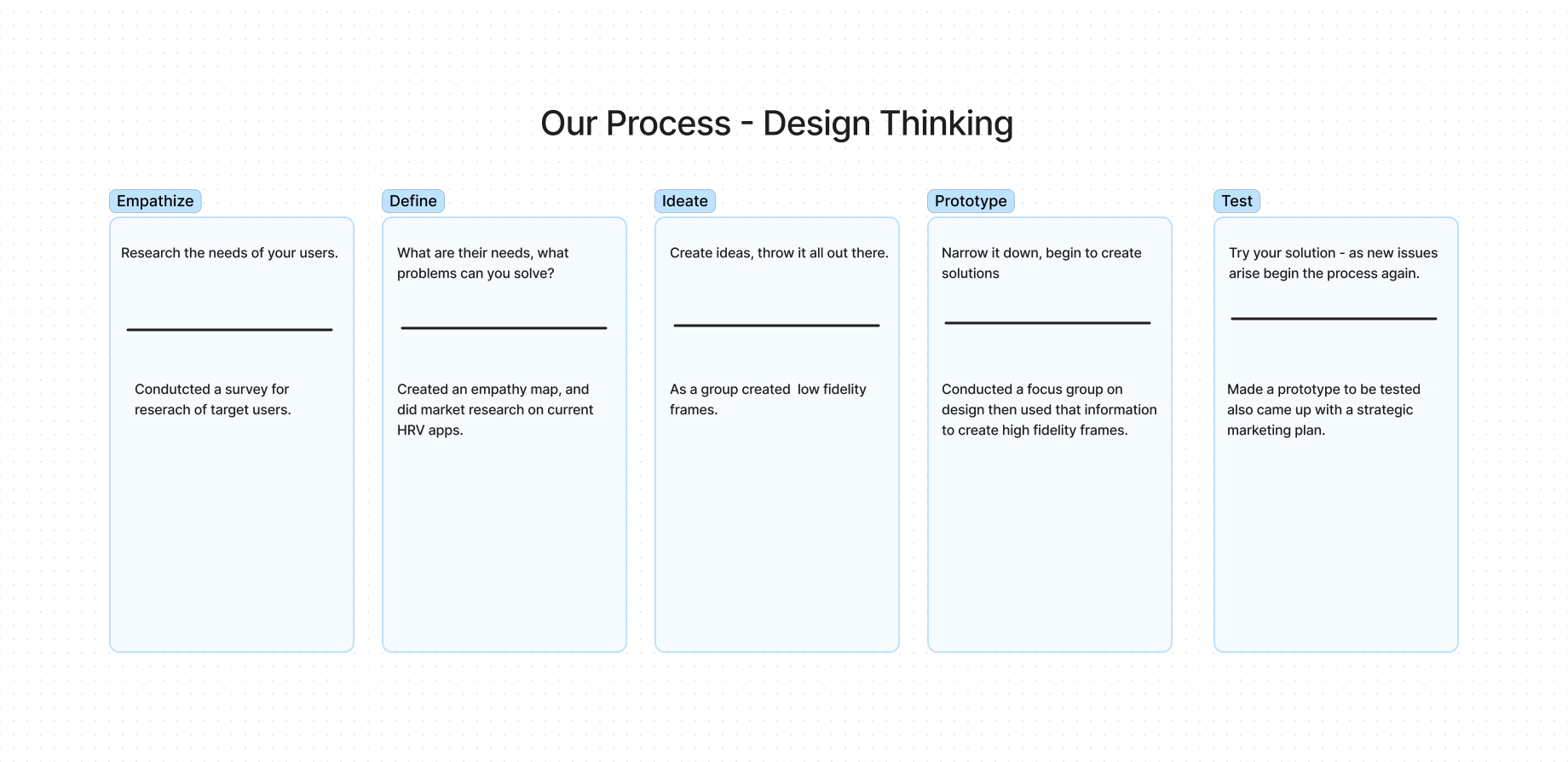
Discovery
Our team started by surveying students. We wanted to understand what students knew about stress, meditation, and HRV. Some of the questions we asked are:
• Do you practice in kind of mindfulness or meditation techniques?
• If you practice any, do you use an app?
• Do you feel like you suffer from anxiety, depression, or similar during the school semester/s?
• Have you ever heard of HRV (Heart Rate Variability)?
We also had a free answer section where we asked: What are some anxieties, worries, and mental health issues that you think about or may have questions about during your semester? We used that information and created an empathy map from general themes that came out in that portion of the survey.
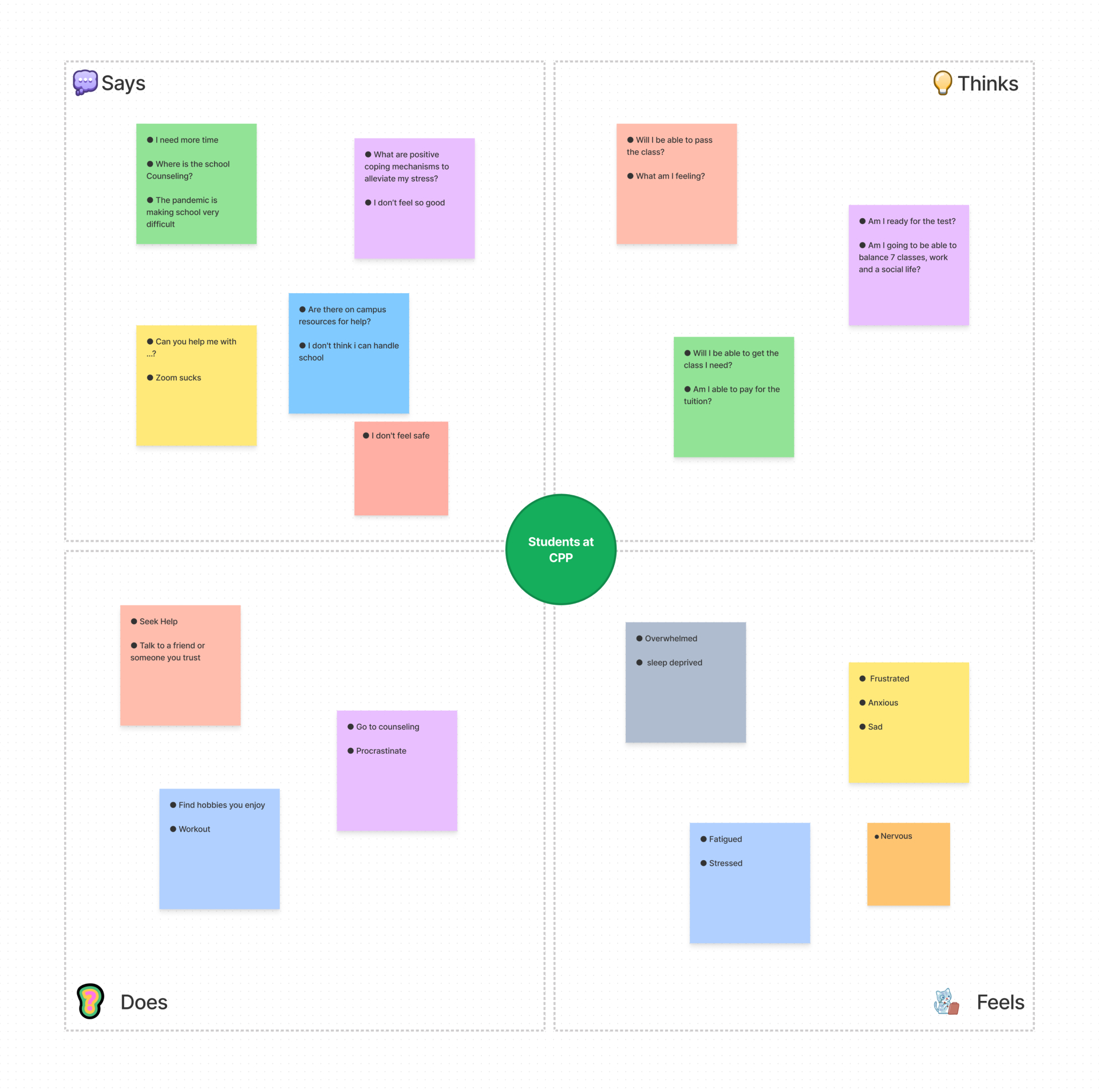
From our research, we discovered, that students are preoccupied with mental health and are willing to seek help. An app could be a useful addition to supplement other university wellness programs. We then looked at the market for HRV training apps to see how our app would be different and to see what kind of use cases had already been done(Competitive Analysis).
Persona Info
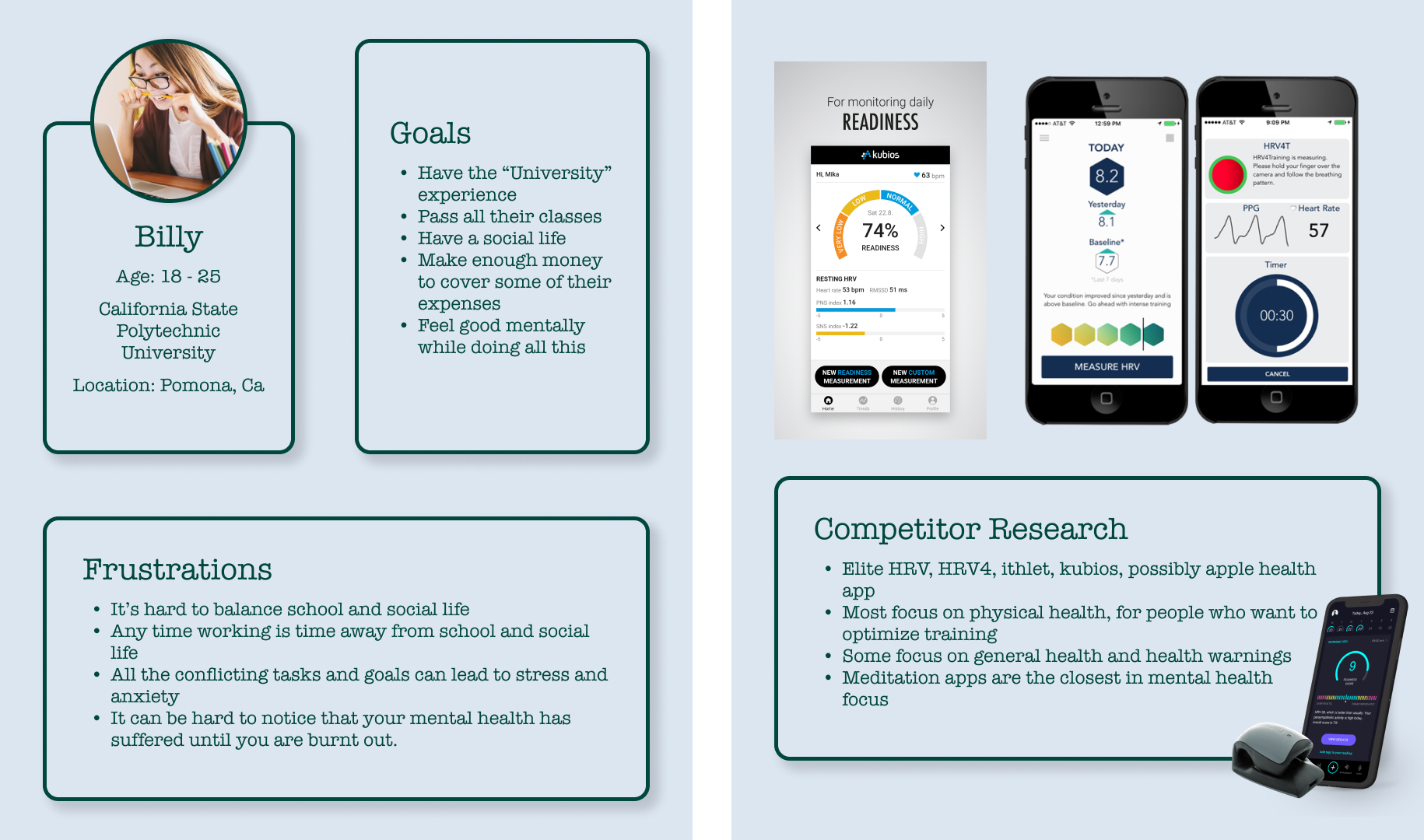
Competitive Analysis
From our research, it seems that most of the other HRV apps focus on health and physical activity the closest analog would be meditation apps which can have similar use cases. Still, we believed that there was space for an HRV app focusing on mental health, with a psychobiological component.
And of course, we were right, aesthetics, especially negative ones can affect the perception of the quality of the work, especially to users who are not aware of UX Design principles. Most of the testers mentioned that our design wasn’t quite “right” but when asked about specific elements like review sections and comparing they preferred our idea. We considered that mostly a win and created a more high-quality version to present to our cohort.
After synthesizing the information, we started discussing different ideas of what the app would have and how it might look, we then created a prototype in Canva, a service a lot of marketing students already had access to and familiarity with. Because of time constraints, we iterated together in one file changing things as we discussed.
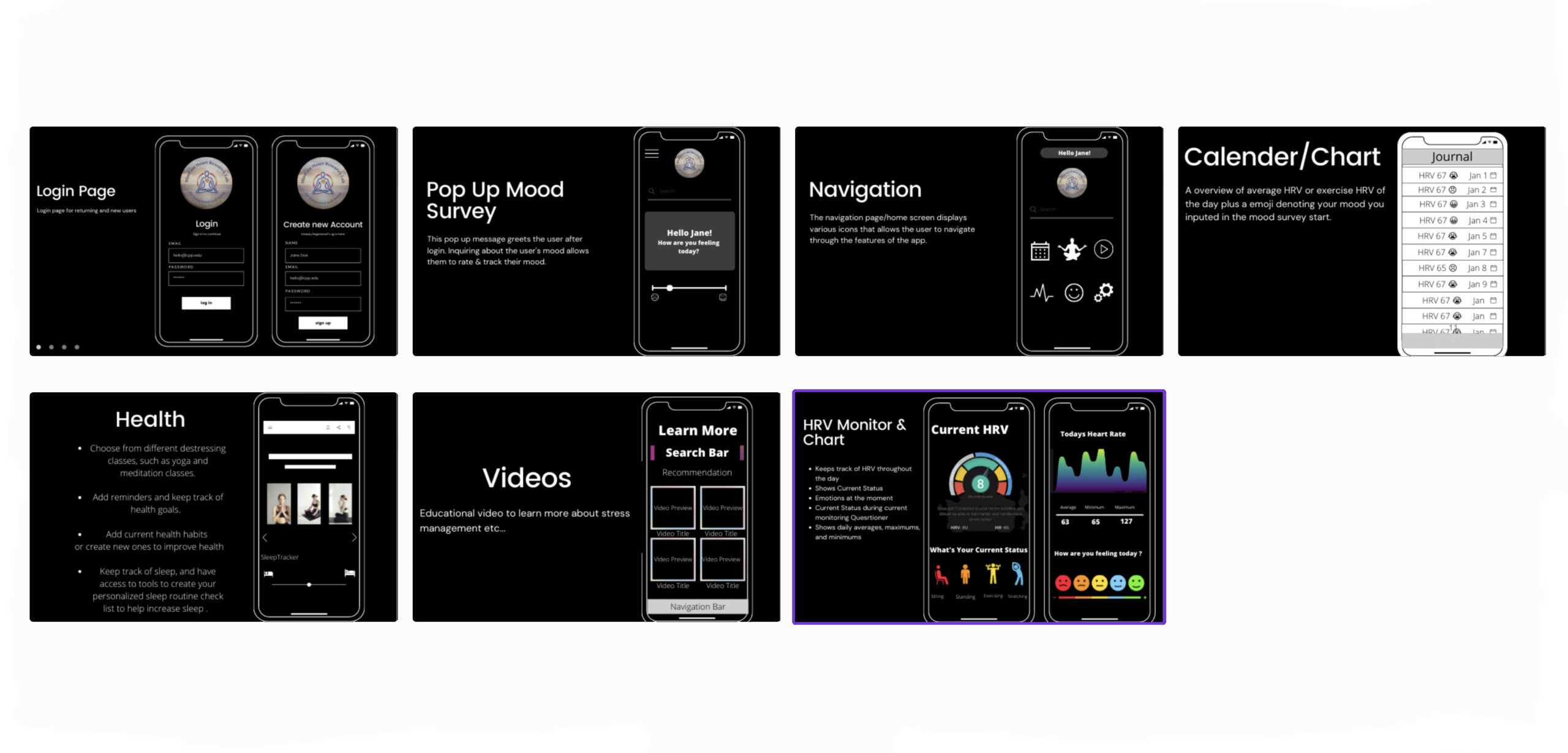
Prototype and Test
We conducted a focus group with a couple of students showing them the Canva prototype. We used their feedback to improve our prototype as we worked on a more high-fidelity version. We used Figma because we wanted to be able to show a prototype the research team could interact with. With the short turnaround time, we weren’t able to test the prototype with any students so the main test would be the feedback we got from the team who would be looking at all the projects..
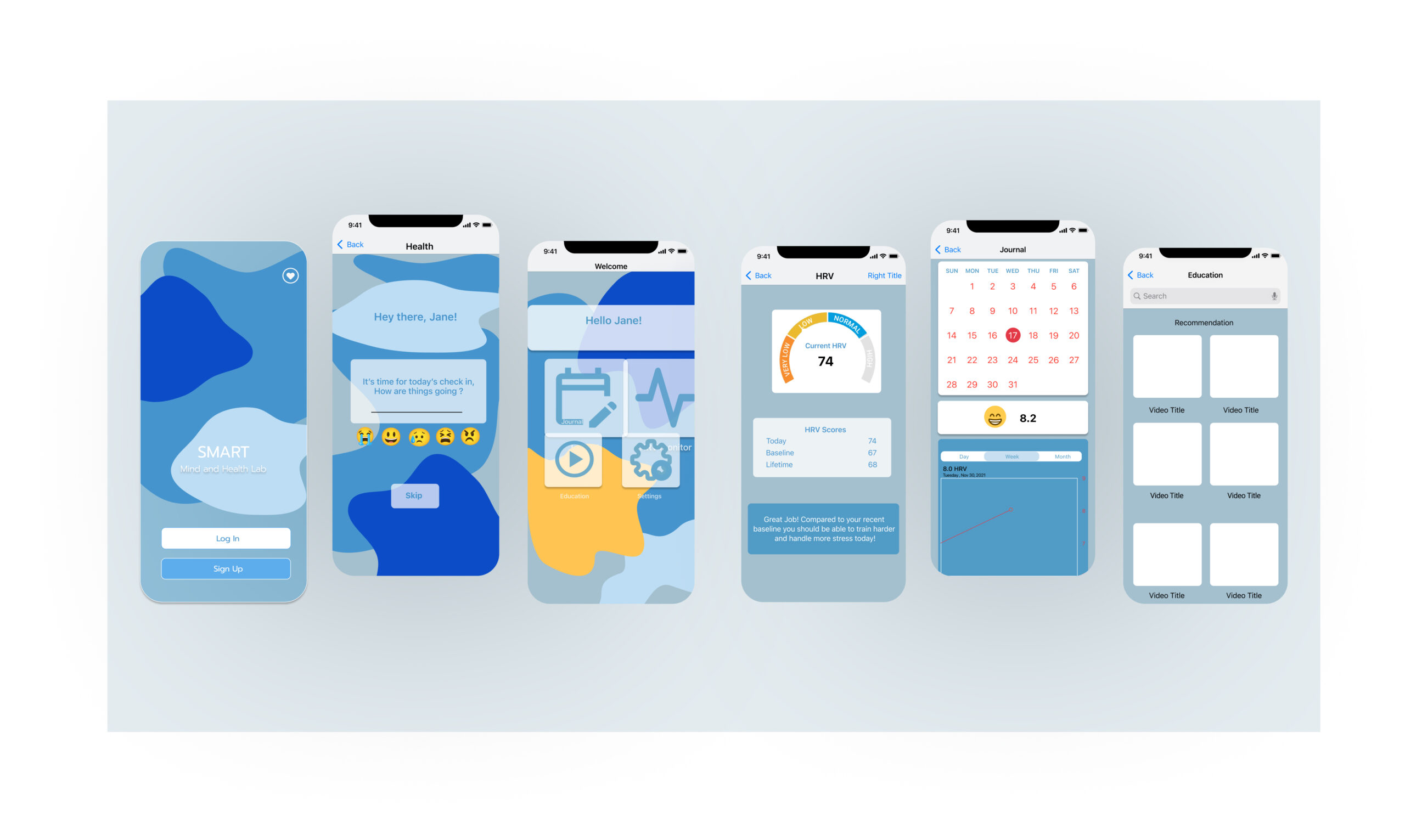
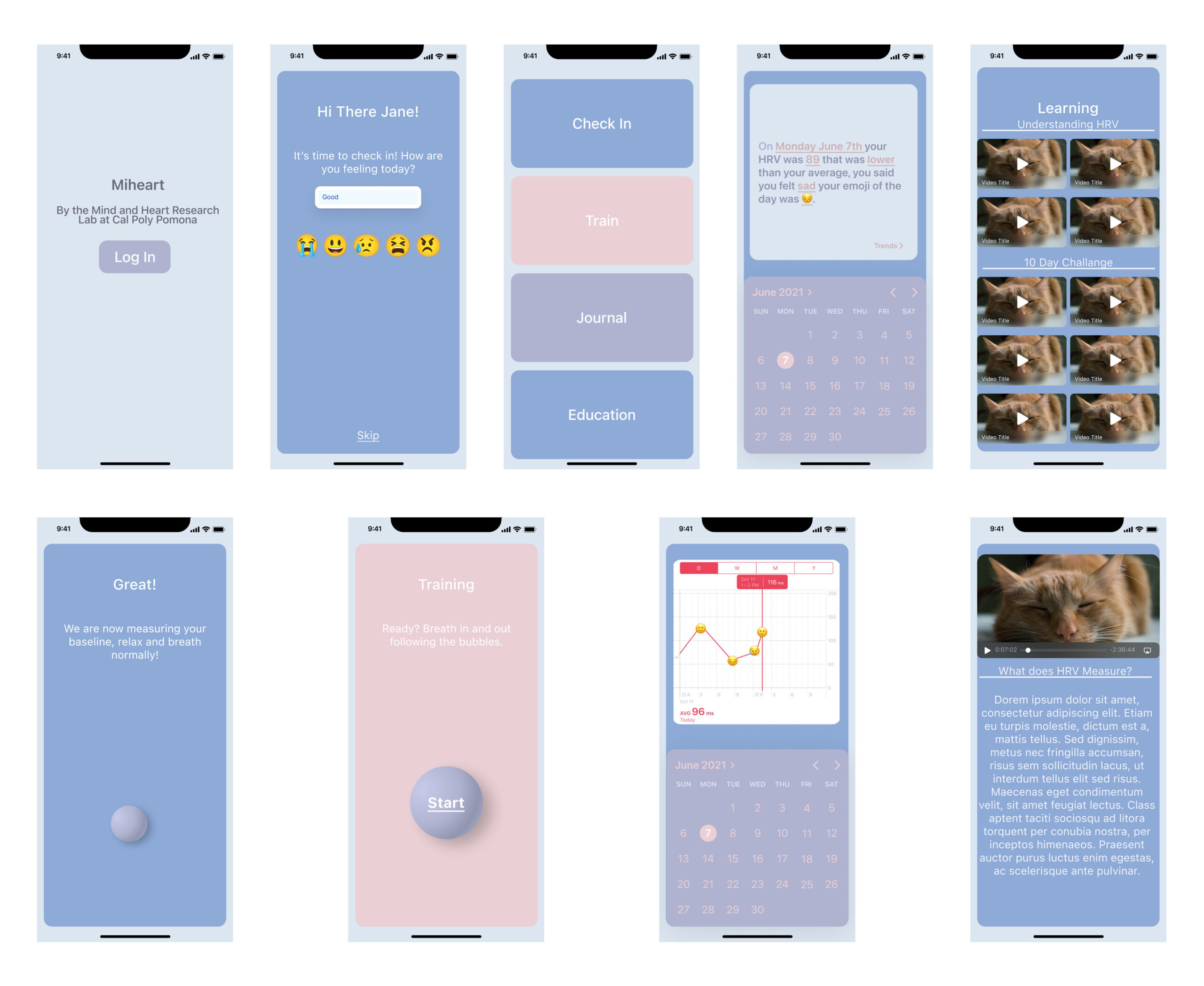
The Prototype
Presenting the Findings, what we learned.
For our actual delivery, we turned in the high-fidelity wires and a non-working prototype. We presented our research findings to the team, and they were able to try out the prototype
We were successful in our main goal of having a design done with research and the next steps ready to go. Included in the final presentation were suggestions on how to increase engagement on social media for the Lab’s other programs to have more campus familiarity and have an audience for the app once it was up and running. Our app and presentation got special recognition from the Reattach team for our prototype.
I learned a lot about product marketing and product design when dealing with an actual client, especially about working with tight deadlines and quick turnarounds. Ideally, we would have been able to conduct testing with students on the non-working prototype to refine our design. It would have been better to conduct at least some user tests in person to get a better feel for user interaction.
